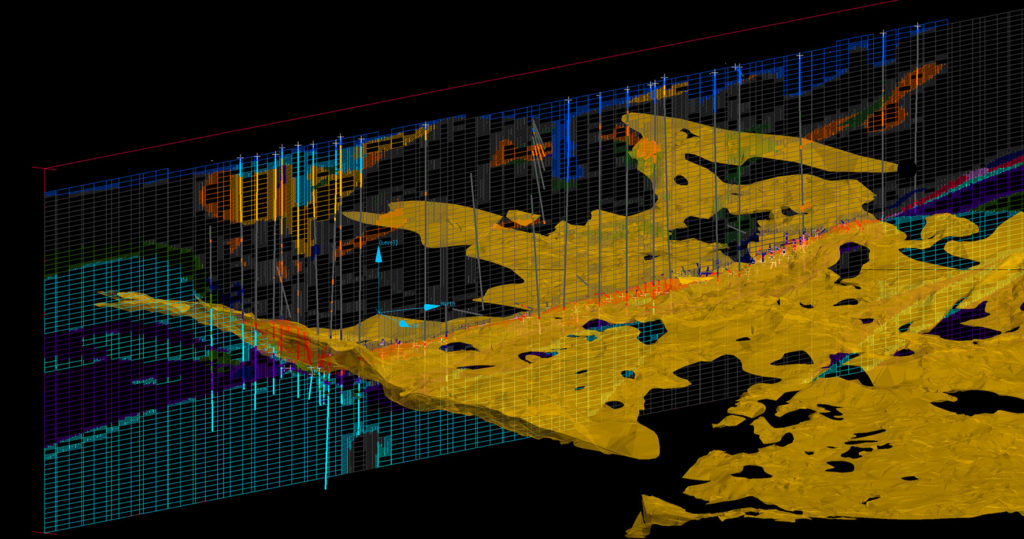Machine learning combined with cloud computing is destined to free up the geological supply chain to allow businesses to better leverage a key asset – their geological model. April 2021 sees the market release of DomainMCF, a platform that Maptek says will ‘put the geology back into geologists.’ Geologist and Project Lead Steve Sullivan said that geologists feed in drilling data and obtain domain or grade models in dramatically less time than traditional resource modelling methods. DomainMCF applies deep learning and big data computing methods to generate domain boundaries directly from drillhole sample data. Rapid generation of resource models is a game changer for operations.
It avoids bottlenecks that may be created when waiting for up to date models and avoids the risks of using non-current information for planning current work. DomainMCF models also contain an inbuilt measure of uncertainty, which allows businesses to assess the variability in their model against external factors such as commodity markets and customer orders. Uncertainty models can better quantify confidence levels when assessing resources and reserves, reducing the subjectivity around the process. Sullivan says that human-based decisions could not compete with machine learning to meet business demands for accurate, up to date information about the resource. Cloud computing provides the processing muscle, reducing the need for expensive, high end desktop systems which can become locked up in one process running traditional modelling software.
Sullivan added that as well as helping ease bottlenecks, the technology has proven applicable in predictive modelling for grade control, lithology targeting, drillhole planning, geotechnical rock quality and strategic scheduling. “In resource modelling you have a huge premium on creating value. When you start to see the impact on downstream processes you know that the investment has paid off. So, getting better models with an uncertainty factor built in, and getting them quicker and with less manual data manipulation is the winner for geologists.”
He is extremely upbeat about the potential for machine learning technology, likening the magnitude of improvements to those unlocked for geologists in the 1980s and 1990s when computerised modelling replaced printed maps and plans. “Conditions involving volatile markets and disrupted supply chains underline the importance of being able to pivot,” said Sullivan. “New technologies such as DomainMCF put their hands up when businesses try to rationalise their systems needs and look for more cost efficient and effective processes. I don’t know of any mining operation that can do the same things the same way they did in the past,” Sullivan added. “Every single company has to take some sort of action to stay at the forefront of technology to enable their teams to take advantage of what is being offered.”











